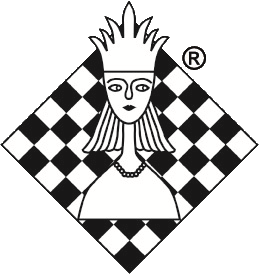Garry Kasparov and thirty years of computer chess
By Frederic Friedel
In 1984 Garry Kasparov played a World Championship "first to win six" match against Anatoly Karpov. After nine games he was 0-4, after which there followed a series of 17 successive draws. Kasparov then lost game 27, and standing on the 0-6 precipice he fought back with another series of draws until game 32, in which he defeated Karpov. Another 14 draws followed, after which Kasparov won games 47 and 48 to narrow the scores to 3-5. At this point FIDE President Florencio Campomanes ended the match without result and announced that a new match would be started six months later. The termination was controversial, and Kasparov spoke out vehemently against it at the February 15 FIDE press conference in Moscow.
In 1985, before the new match was held, Der SPIEGEL, Europe's biggest and most influential news magazine, invited Kasparov to Hamburg for a major interview – and to play a title preparation match against top German GM Robert Hübner. The interview was a sensation – frank, courageous, outspoken, something we had not seen before from a Soviet citizen. I am delighted to see that it is still online, in German, with Google doing a fair job of translating it.
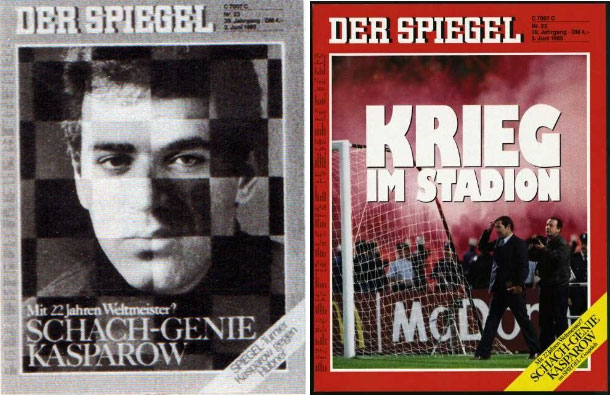
I was part of the organisation of the Spiegel events surrounding the Kasparov visit and saw the original title that was prepared for that week's edition. It was a stunning image of the young chess genius – I only have a black and white photo of it (above left). Unfortunately just before the magazine hit the newsstands there was a football catastrophe in Belgium and the Kasparov title was dumped for a new cover story (above right: "War in the Stadium").
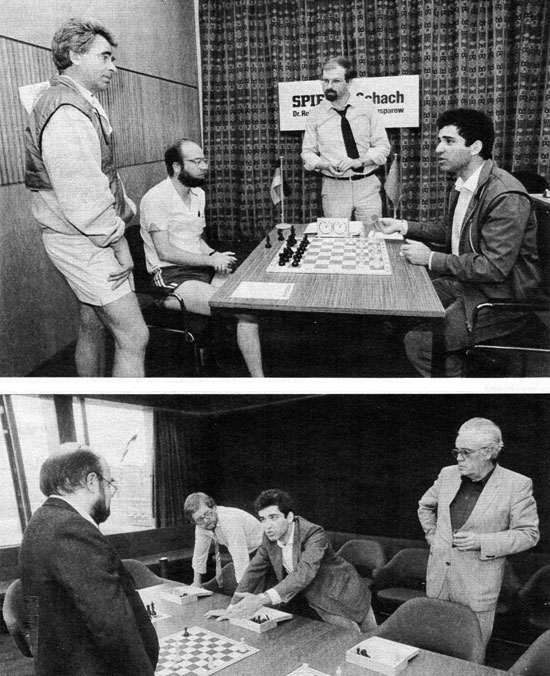
The above shots are from the preparation of the Hübner match. In the top picture we see Boris Spassky, who seconded the German grandmaster; Robert Hübner; the arbiter and director of the German Chess Federation Horst Metzing; and the 22-year-old World Championship challenger Garry Kasparov. On the right in the bottom picture is Werner Harenberg, a senior editor of Der Spiegel, who organised the entire action. Harenberg was a great mentor to me and sadly passed away last year.
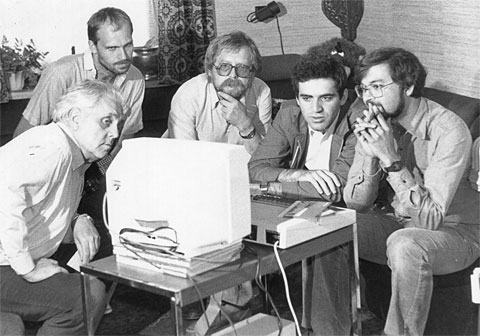
Apart from the Hübner match, which Kasparov won 4½-1½, he participated in a number of activities, like a ten-game blindfold simul and a remarkable 32-board simul against computers. He also dropped into my home in the suburbs of Hamburg, with Harenberg and other Spiegel colleagues. In the above image I am on the right showing him some programs on the BBC Acorn computer and introducing him to the word "database", which with his vigorous encouragement was soon to become a vital instrument in chess study. (That tale has been told elsewhere and needs no repeating).
The subject of today's story is the computer simul. At the time the strongest chess playing electronic entities available to the general public were dedicated chess computers, produced by four leading manufacturers: Novag and Scisys in Hongkong, Hegener & Glaser in Germany and Fidelity in the US. These four companies sent their top models to Hamburg for the simul against Kasparov.
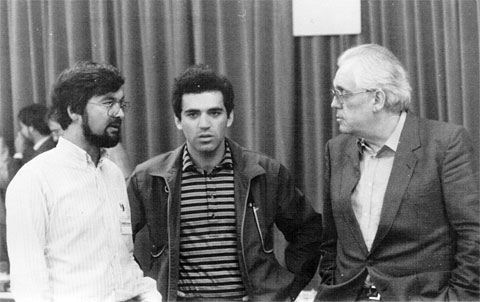
I helped to organize the simul and as a computer chess expert did not have a good feeling about it at all. I warned Garry that the difference to a normal simul would be that his opponents would at no stage show the slightest signs of exhaustion, they would never feel discouraged, and they would defend each game vigorously to the very end.
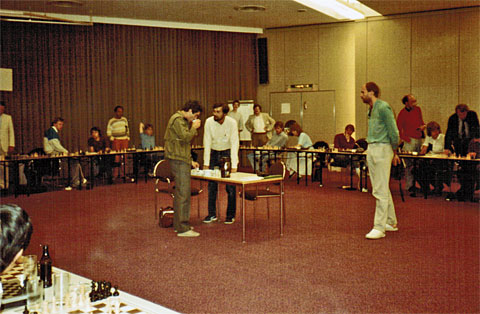
Preparation before the start of the 32-board computer simul in 1985

The computer operators had to execute a move when Garry appeared at the board
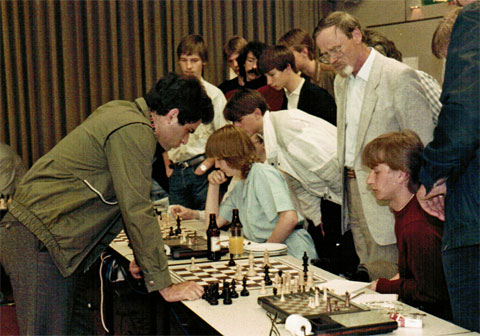
There was a lot of interest for the game – chess computers were new and exciting
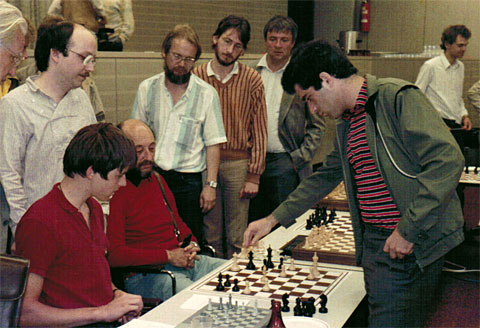
In the striped white-and-blue shirt is GM Helmut Pfleger, one of the kibitzers

On one of the boards Garry had a problem, which he himself described thus:
At some point I realized that I was drifting into trouble in a game against one of the "Kasparov" brand models. If this machine scored a win or even a draw, people would be quick to say that I had thrown the game to get PR for the company, so I had to intensify my efforts. Eventually I found a way to “bluff” the machine with a dubious sacrifice that any modern chess computer would refute in a split-second. But in the good old days of computer chess (to me!) and in my spry youth I could keep coming back to the board fast enough to terrorize the machine with a mating attack.
The game he is referring to is the first on the replay board below. Garry annotated it for us and selected a few more he found especially interesting. You could sense the thrill he felt while running through the old games (ever hear Garry giggle?). "Wow, I was attacking all the time, in every game. What energy!" Well, you were 22 at the time, Garry.
Replay selected games
Select games from the dropdown menu above the board
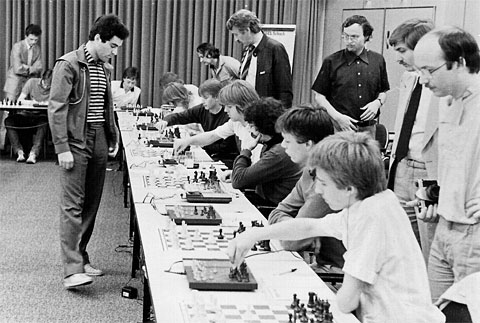
At the time we were shooting mostly in black-and-white – and these images were scanned from prints

Garry vs Mephisto: on the left with the desktop computer is programmer Richard Lang
(Mesphisto, Chess Genius), behind Kasparov in the middle is Ed Schroeder (Rebel)
So here are the historic games, played exactly thirty years ago today. Think of it: at the time the parents of some of today's grandmaster were still kids. It is interesting to run through the games and try to fathom the progress that has been made in chess programming in the last three decades.
Replay all the games from the 1985 computer simul
Select games from the dropdown menu above the board
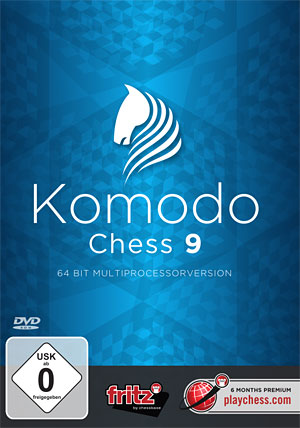 Today computers are, shall we say, considerably stronger. My latest Komodo 9, running on an eight core notebook, is well over 3000 Elo points in playing strength. That is against other computers, the only way we can measure its performance. I suspect that against humans, if anyone would agree to play it, Komodo would score even higher, simply because humans make mistakes, get tired and are easily discouraged, something that is not a factor in computer vs computer play.
Today computers are, shall we say, considerably stronger. My latest Komodo 9, running on an eight core notebook, is well over 3000 Elo points in playing strength. That is against other computers, the only way we can measure its performance. I suspect that against humans, if anyone would agree to play it, Komodo would score even higher, simply because humans make mistakes, get tired and are easily discouraged, something that is not a factor in computer vs computer play.
Komodo Chess 9 includes:
-
The Komodo 9.01 engine, which supports up to 64 processor cores and 16 GB of hash memory;
-
The Deep Fritz 64-bit program interface (+ 32 bit program interface);
-
A ChessBase PREMIUM Account: six months online access to Playchess.com, ChessBase live database, Let’s Check, Engine Cloud, Tactics Training.
Price: €79.90. Update from Version 8: €39,90 including six months ChessBase Premium.
Order Komodo Chess 9 in the ChessBase shop
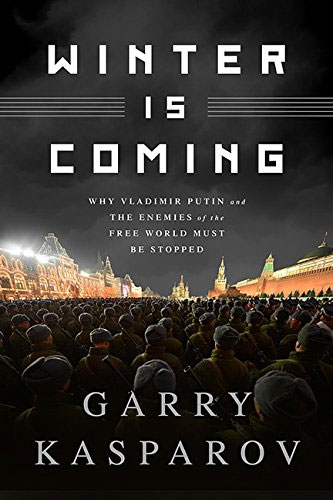 Garry Kasparov's new book Garry Kasparov's new book
The ascension of Vladimir Putin – a former lieutenant colonel of the KGB – to the presidency of Russia in 1999 should have been a signal that the country was headed away from democracy. Yet in the intervening years – as America and the world's other leading powers have continued to appease him – Putin has grown not only into a dictator but a global threat. With his vast resources and nuclear weapons, Putin is at the center of a worldwide assault on political liberty.
For Garry Kasparov, none of this is news. He has been a vocal critic of Putin for over a decade, even leading the pro-democracy opposition to him in the farcical 2008 Presidential election. Yet years of seeing his Cassandra-like prophecies about Putin's intentions fulfilled have left Kasparov with the realization of a darker truth: Putin's Russia, like ISIS or Al Qaeda, defines itself in opposition to the free countries of the world. He is still fighting the Cold War, even as Americans have first moved beyond it, and over time, forgotten its lessons.
Lest we be drawn into another prolonged conflict, Kasparov now urges a forceful stand – diplomatic and economic – against him. For as long as the world's powerful democracies continue to recognize and negotiate with Putin, he can maintain credibility in his home country. He faces few strong enemies within his country, so meaningful opposition must come from abroad.
Argued with the force of Kasparov's world-class intelligence, conviction, and hopes for his home country, Winter is Coming is an unmistakable call to action against a threat we've ignored for too long.
You can pre-order Kasparov's book, which is due for release in October 2015,
in hardcover for $20 at Amazon, Barnes & Nobel, or IndiBound
|
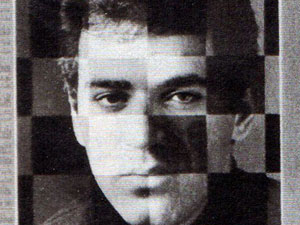













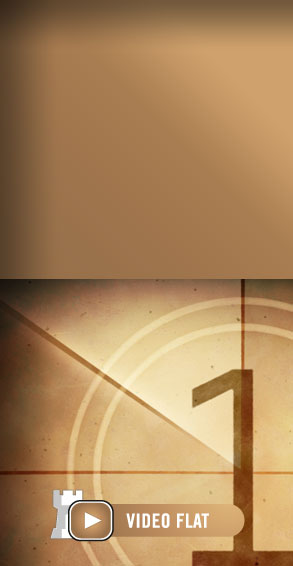
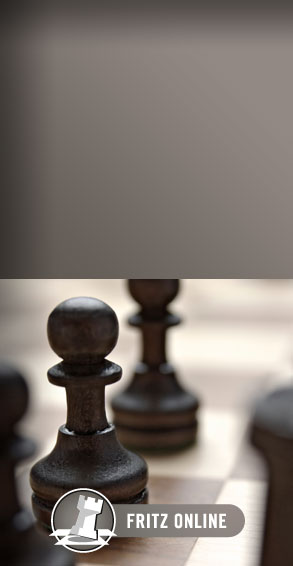
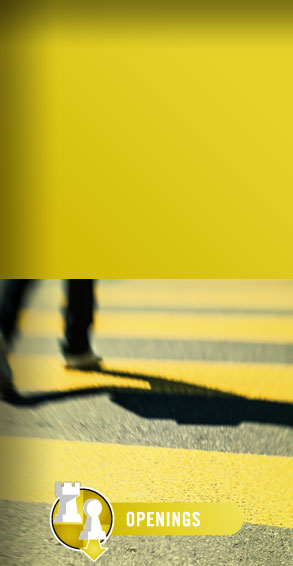
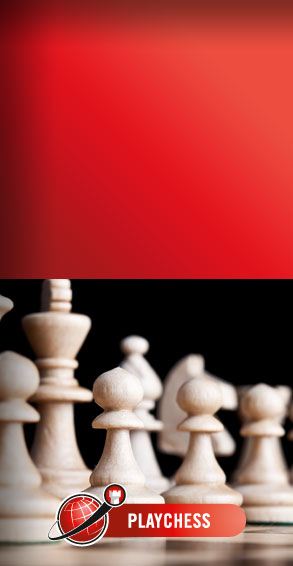









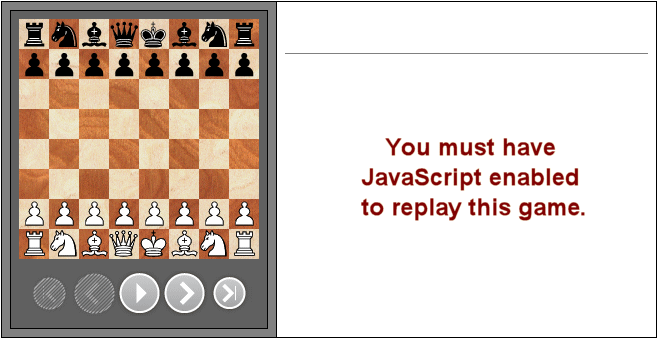


 Today computers are, shall we say, considerably stronger. My latest Komodo 9, running on an eight core notebook, is well over 3000 Elo points in playing strength. That is against other computers, the only way we can measure its performance. I suspect that against humans, if anyone would agree to play it, Komodo would score even higher, simply because humans make mistakes, get tired and are easily discouraged, something that is not a factor in computer vs computer play.
Today computers are, shall we say, considerably stronger. My latest Komodo 9, running on an eight core notebook, is well over 3000 Elo points in playing strength. That is against other computers, the only way we can measure its performance. I suspect that against humans, if anyone would agree to play it, Komodo would score even higher, simply because humans make mistakes, get tired and are easily discouraged, something that is not a factor in computer vs computer play. Garry Kasparov's new book
Garry Kasparov's new book



